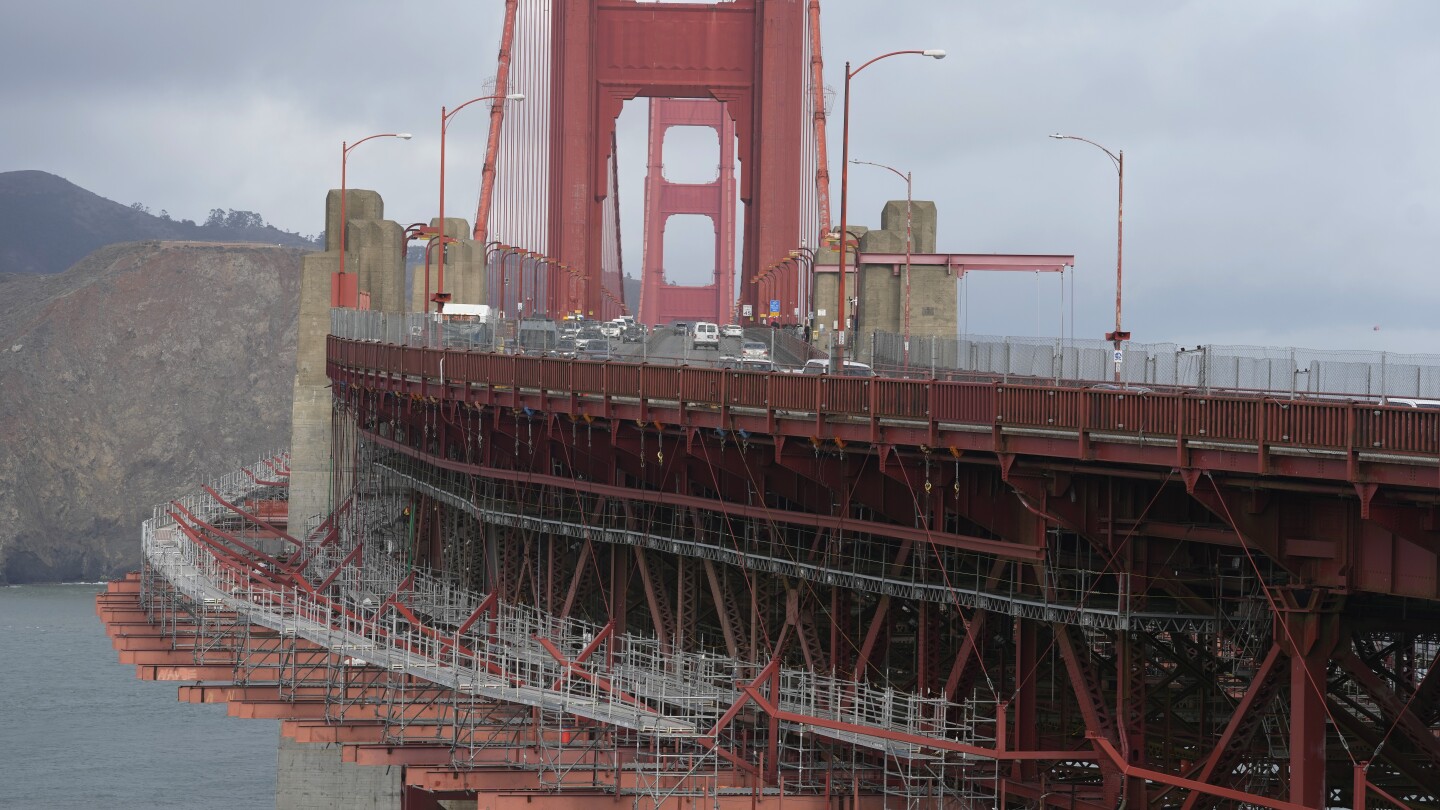Kevin Hines regretted jumping off San Francisco’s Golden Gate Bridge the moment his hands released the rail and he plunged the equivalent of 25 stories into the Pacific Ocean, breaking his back.
Hines miraculously survived his suicide attempt at age 19 in September 2000 as he struggled with bipolar disorder, one of about 40 people who survived after jumping off the bridge.
Hines, his father, and a group of parents who lost their children to suicide at the bridge relentlessly advocated for a solution for two decades, meeting resistance from people who did not want to alter the iconic landmark with its sweeping views of the Pacific Ocean and San Francisco Bay.
On Wednesday, they finally got their wish when officials announced that crews have installed stainless-steel nets on both sides of the 1.7-mile (2.7-kilometer) bridge.
“Had the net been there, I would have been stopped by the police and gotten the help I needed immediately and never broken my back, never shattered three vertebrae, and never been on this path I was on,” said Hines, now a suicide prevention advocate. “I’m so grateful that a small group of like-minded people never gave up on something so important.”
Nearly 2,000 people have plunged to their deaths since the bridge opened in 1937.
City officials approved the project more than a decade ago, and in 2018 work began on the 20-foot-wide (6-meter-wide) stainless steel mesh nets. But the efforts to complete them were repeatedly delayed until now.
The nets — placed 20 feet (6 meters) down from the bridge’s deck — are not visible from cars crossing the bridge. But pedestrians standing by the rails can see them. They were built with marine-grade stainless steel that can withstand the harsh environment that includes salt water, fog and strong winds that often envelop the striking orange structure at the mouth of the San Francisco Bay.



Curious since I’m not familiar, how do the awnings prevent this? I went to SF a few years ago and there was a giant pile of human shit every 4 blocks so I’m not too surprised.
They basically close off the street level entrance when the transit isn’t running. The escalators used to be open at the top and closed at the bottom during off hours, making a lovely little private pooping tunnel. The city budget people didn’t GAF about the bio hazard or human dignity issues, they just didn’t like that all the excrement kept breaking the escalators.
Old article from before they implemented them (the article mentions the budget proposal being $4 million, it’s turned into $64 million and counting).
https://thebolditalic.com/why-is-there-so-much-human-shit-on-the-streets-the-bold-italic-san-francisco-ccaecdc7512
This guy Friedenbach sounds like he knows his shit.
$4 million for one canopy.
FTA:
Odd, I lived in the Bay Area for years and never once saw a pile of human excrement in the city.
It must be a fairly recent phenomenon then. I was there in 2022 and it was quite sad to see the amount of people left homeless around the city.
There’s an increasing number of homeless people in all cities. The streets just aren’t paved in turds like some people apparently love to pretend.